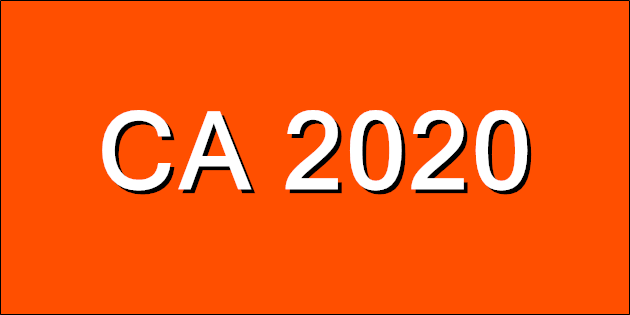Mimica, which automates RPA, raises $6M Series A funding led by Khosla Ventures
I'm holding out for the company that automates robotic process automation automation.
Four and a half mile hike from Stone Creek Campground in Mount San Jacinto State Park to the ruins of a sawmill and back again. The mill is hidden but watch out for a yellow sign off the trail.
The campground was closed for the season when we arrived and a permit is required. We phoned the ranger station who said the trail was off limits and to come get a permit and discuss other hikes. After much discussion it turned out the concern was illegal parking near the campground and after promising to find legal parking and walk in we were allowed to complete the hike.
I don't have a GPS track for this one. Usually I download a GPX to Gaia GPS on my phone and use this to follow the trail. Traveling without a laptop I tried to do this from the AllTrails mobile app which wanted a paid upgrade. I have used AllTrails a fair bit so was happy to pay, but even after upgrading you can only download locally to AllTrails, the mobile app won't allow you to generate a GPX. I understand the commercial desire to lock people into their app, but I have used Gaia GPS for years an trust it to not drain my battery or otherwise cause problems when off the beaten track. AllTrails also won't let you copy and paste from hike descriptions (even ones with a long URL to check for road closures in them), and you can't export the route you took either (which I do from Gaia GPS to generate maps and elevation profiles for this blog). So I'll be cancelling that AllTrails subscription and have learned to get an export from a laptop and ignore the mobile app.
Saw a bobcat which is a first. Probably due to the trail being closed and quiet.
(Hike Map)
(Published to the Fediverse as: Sawmill Flats #hike #bobcat #jacinto #video Four and a half mile out and back hike to the ruins of a sawmill in Mount San Jacinto State Park near Idyllwild, California. Starts at 6,000 feet with around 800 gain. Trailhead at Stone Creek Campground. )
Mimica, which automates RPA, raises $6M Series A funding led by Khosla Ventures
I'm holding out for the company that automates robotic process automation automation.
San Francisco is apparently going to hell with criminals free to do as they please with no fear of consequences. I decided to take a look at the data.
The video above shows a timelapse of SFPD incidents from 2003 through yesterday. Each frame is a day and shows incidents from the previous seven days. The top left corner of the video shows the date and the seven day count of incidents.
I grouped the reported categories into a few colors. Red is used for murder and rape. Orange for arson and kidnapping. Yellow for thefts and assaults. Purple for sex and drugs. Grey for anything else. I excluded some categories from the data (recovered vehicle, traffic collision, case closure and non-criminal).
SFPD reports the location of incidents as the closest intersection. To keep everything visible I move the location randomly within a tenth of a mile where there is a specific location reported. For crimes without a location I use a random spot within half a mile of the center of the police district (or the center of San Francisco if the district is missing - this is unusual).
The volume of incidents changes a bit during the ~18 years shown in the video, but the only real outlier is the dip following the start of the coronavirus pandemic in March 2000. Crime picks back up after this but so far hasn't returned to the level it was at before the pandemic.
Police incidents come from two datasets: Police Department Incident Reports: 2018 to Present and Police Department Incident Reports: Historical 2003 to May 2018. San Francisco is plotted using Elevation Contours. The pre and post 2018 data sets use different categories but I coded both to the set of colors outlined above. There is a drop in incidents right at the end of the video which I expect is caused by incomplete data rather than any change in crime rate.
(Published to the Fediverse as: San Francisco Crime 2003 to 2021 #timelapse #sanfrancisco #crime #datalapse #coronavirus #video Timelapse video animation showing crimes in San Francisco color coded by category from 2003 to 2021 using SFPD incident reports from SFData.gov. )

I'm lucky enough to have the right sort of TPM so Windows 11 installed smoothly on my laptop through Windows Update. It's got some nice fit and finish improvements and round corners and generally seems well put together. Except for anything I actually use and care about on a regular basis.
It is still impossible to get rid of notifications with one click. This has actually regressed from Windows 10 as we're back to a little x to dismiss which actually sends the notification off to the action center for when you have some spare time to dismiss it a second time. Microsoft, spend less time on focus assist and more time on this!
The taskbar wants your icons in the center. If I wanted a Mac I would have bought one. Luckily there is a setting to move them back to the left. But one thing you can't do is have small taskbar icons. There is a registry hack, but it breaks the system icons so until that's fixed the main impact of Windows 11 for me is missing out on about one row of a spreadsheet. I would like those pixels back!
Maybe the start menu is better, but I stopped using that with Windows 10 and now just pin apps or search for them so I'd never know.
(Previously: I just want to get rid of Windows 10 Notifications with one click)
Updated 2021-12-04 10:35:
A few weeks into my Windows 11 adventure and I think they handed this one off to the designers and forgot the adult supervision.
Alt-Tab you have one job and it's switching between applications. Why then is the selection now indicated by a hair thin black border? It's pretty, but I now have to squint to figure out where I'm going.
Worse still you can no longer drag and drop to the taskbar. I don't do this every day, but it's a big time saver when I need it. Now I have to go through a re-org of windows to drag things between them.
(Published to the Fediverse as: Windows 11 Broken Notifications #etc #windows #microsoft Windows 11 still won't let you dismiss notification with one click. It also gets rid of small taskbar icons. The windows have nice rounded corners though! )
Catfood WebCamSaver 3.26 is available to download.
This update includes the latest list of webcams. It has also been updated to use .NET 4.8 which means it will install with no additional downloads needed on Windows 10 and 11. The installer is now signed. You might get a warning from Defender about the program being infrequently used, you will need to ignore this to install. Lastly WebCamSaver will now automatically check for updates so you'll get a desktop notification when a new version is available.

Continuing my Catfood Software refresh I have added a detailed WebCamSaver Guide as a companion to the Catfood Earth post. I also released Catfood Earth 4.20. This is a minor feature release (with the 2021d time zone database) but has a lot of upgrades behind the scenes. I've migrated to .net 4.8 and renewed my code signing certificate both of which make it much easier to install on Windows 10 (and 11). Upgrade notifications died when I moved Catfood Software to ITHCWY, with this release there is a new web service so Earth can tell you when thee is a new version available. Similar changes will come to WebCamSaver soon.
Are US schools too obsessed with sports?
Some fun with crystals and Adobe super resolution - I don't think they trained the AI on crystals.
Hikes: Adobe Creek, remnants in the sunset, Twin Peaks and Sugarloaf Ridge State Park.
I might buy more of your podcasts if you stop making them too long.
A milky way timelapse from Sugarloaf Ridge State Park.
Fleet week came back to San Francisco. Photos and timelapse.
Previously:
Catfood Earth 4.20 is available to download.
This update includes the 2021d time zone database.
After procrastinating for far too long I have also migrated to .net 4.8 and renewed my code signing certificate. You'll get at least one less warning when installing and you no longer need to enable .net 3.5 on Windows 10 which was a pain. This shouldn't make any difference but please let me know if you have any trouble installing or running this version.

I have been listening to podcasts for over 20 years.
That shouldn't be possible as the format only really started in 2003. In late 2000 I was commuting from San Francisco to Sunnyvale and wanted to listen to Radio 4 while driving. I cobbled together a solution that involved some dodgy software that saved a RealPlayer stream to MP3, one of the first (pre-iPod) hard drive MP3 players and a headphone jack to FM dongle. I'm pretty sure I was the only person listening to the Today Program on I280 back then.
These days it's Podkicker Pro and Bluetooth and my problem is too many podcasts. For some reason I can't sit down and listen to a podcast. I'll immediately start reading some news or doing something else. The only times I can listen are while I'm occupied with something else - cooking, walking, commuting (and I haven't been doing much commuting recently).
I can't be alone in this but for some reason most podcasts are monetizing with extra content. Pay $5/month on substack and get the extra subscriber episodes or extended interviews or something extra. What I actually want to pay for is less content. Give away the three hour meandering version and charge for a tightly edited hour. Please.
(Published to the Fediverse as: New Podcast Business Model: Less Content #etc #podcasts Podcasts should monetize by giving away the longer version and charging for a well edited cut. )